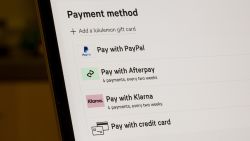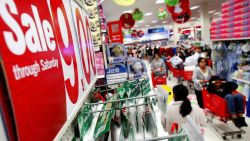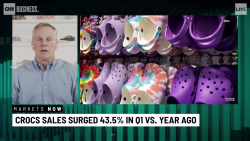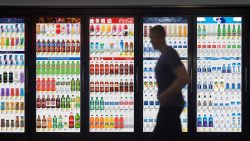Curbside pickup has exploded in popularity over the past few months and retailers and mall operators are rushing to catch up.
The service allows customers to place orders online with a store and then drive to the retailer’s location to pick up items at the curb or sidewalk. Demand for curbside pickup is surging in the pandemic as people look for safe ways to shop and retailers aim to lift sales.
But while big-box retailers like Walmart (WMT), Target (TGT) and Kroger (KR) operate free-standing stores and have the space to quickly ramp up the service, it’s not so easy for America’s malls.
“Think about the physical design of a conventional enclosed mall,” said Greg Portell, lead partner of Kearney’s global consumer practice. “It’s a large enclosed space whose very layout acts as a barrier to easy access.”
For some mall retailers, like department stores, sporting goods chains and mass merchant sellers, curbside pickup is less tricky. They tend to have an exterior facing entrance and ample parking space in front of it.
“It’s the retail tenants that are inside of the mall where it’s more complicated,” said Ami Ziff, director of national retail for Time Equities, which owns and manages more than 100 enclosed and open air malls in 25 states.
The stores that are typically inside the mall are specialty chains selling everything from clothing, shoes and jewelry to scented candles, bath products and home furnishings.

“If a mall has over 200 retail tenants and most are inside of the mall, you can’t have 200 spots for each of them for curbside pickup,” said Yaromir Steiner, founder & CEO of Steiner + Associates, a commercial real estate management and consulting firm in Columbus, Ohio with expertise in retail and mall development.
Lack of parking spots leads to more traffic congestion from curbside collections, and that’s an issue. Another issue, said Steiner, is available labor.
“You also need people to pick up customers’ purchases from the stores and then bring it to the customer at curbside. All this infrastructure has to be organized,” he said.
If malls haven’t already started to get a game plan ready, they have reason to do it soon.
“Our data shows four in 10 shoppers actually tried curbside pickup for the first time since March, and nearly two-thirds of shoppers say they plan to use curbside in the future,” said Rachel Dalton, director with Kantar consulting’s ecommerce team.
“Curbside pickup is absolutely here to say,” said Dalton. “There’s no question about that. So it’s important for malls and retailers to find creative solutions to offer it, especially as sales pick up for back-to-school followed by the holiday shopping period.”
Special signage and pickup stations
Brookfield Properties, a subsidiary of Brookfield Property Partners and the second largest mall operator in the country, launched its curbside pickup program about 60 days ago.
Currently, 115 malls are offering the service and list participating stores on their websites, said Scott Sutherland, vice president of asset management at Brookfield Properties.

The malls have placed special signage to guide shoppers to a designated parking area where store employees bring their ordered items to place them in the trunk or backseat.
“Retailers are responsible for collecting the ordered items and bringing them to customers. But the program will evolve,” Sutherland said.
Another option Brookfield is exploring for its malls is a valet service-like setup with different pickup stations for multiple retail brands. Customers can drive to the stations that list the stores where they made a purchase, said Sutherland.
Industry experts said malls could hire outside firms to run such a service. The service would have its own employees gather all of the purchases from the stores and have them ready for for pickup at a central location.



























